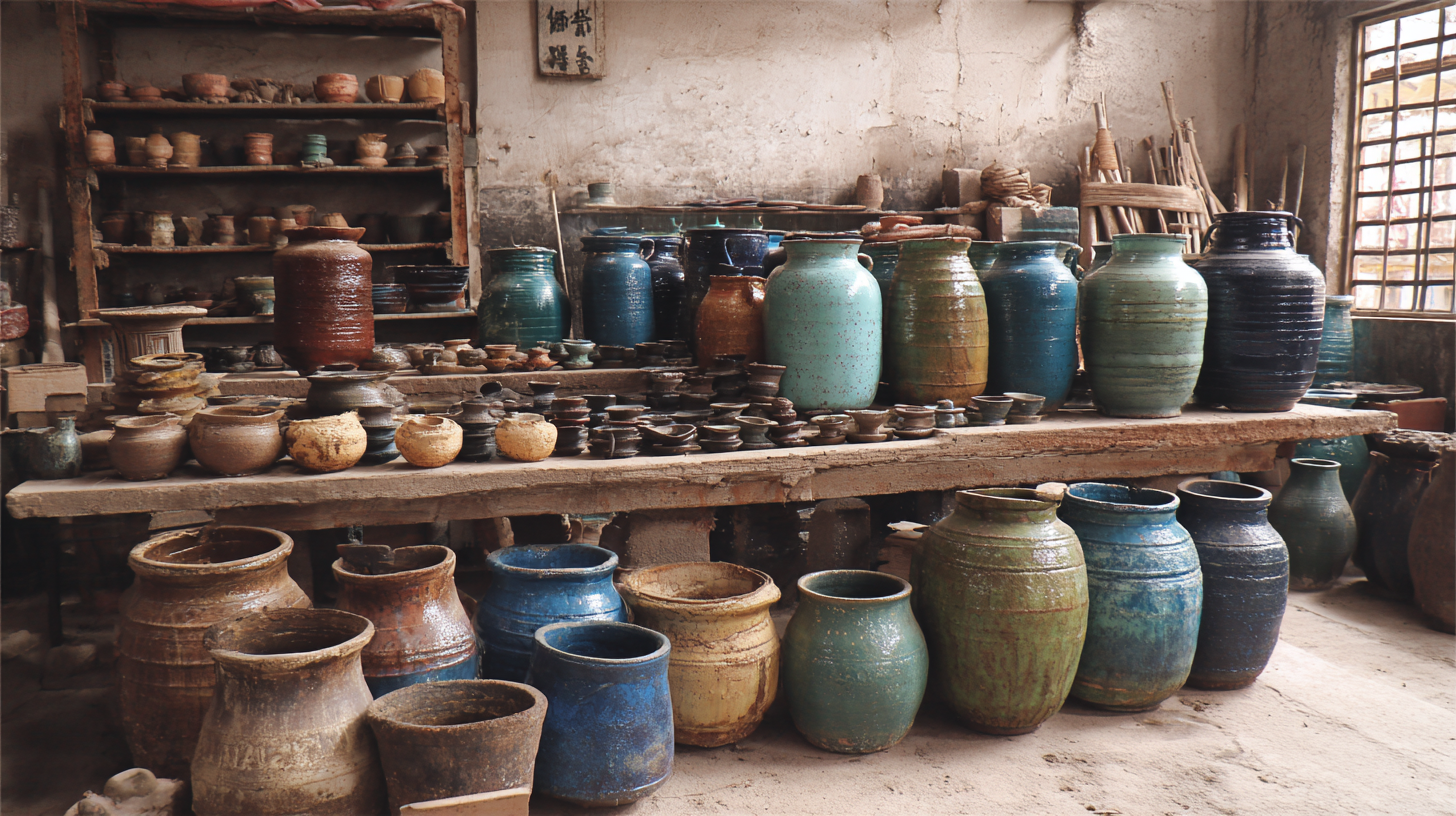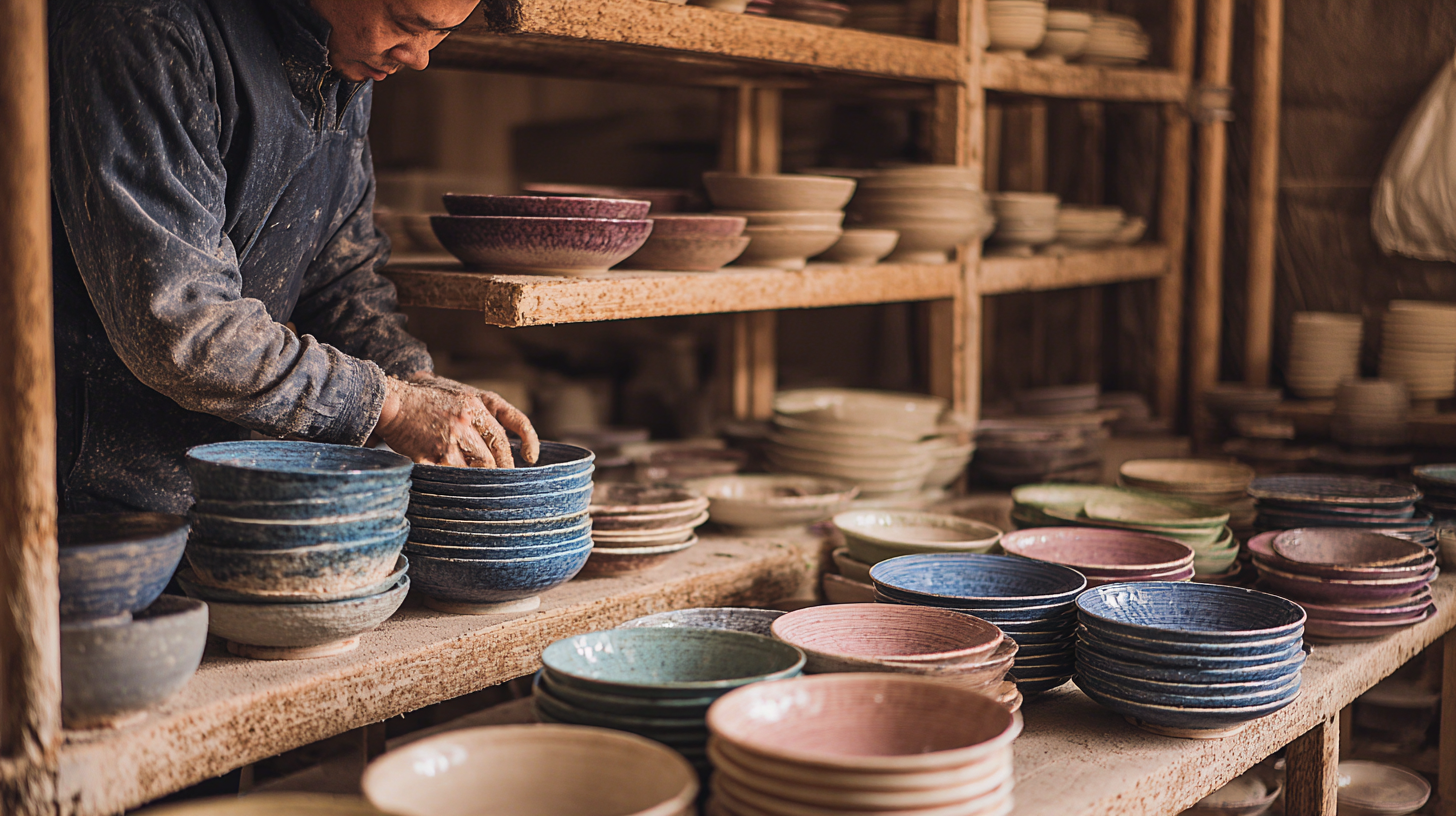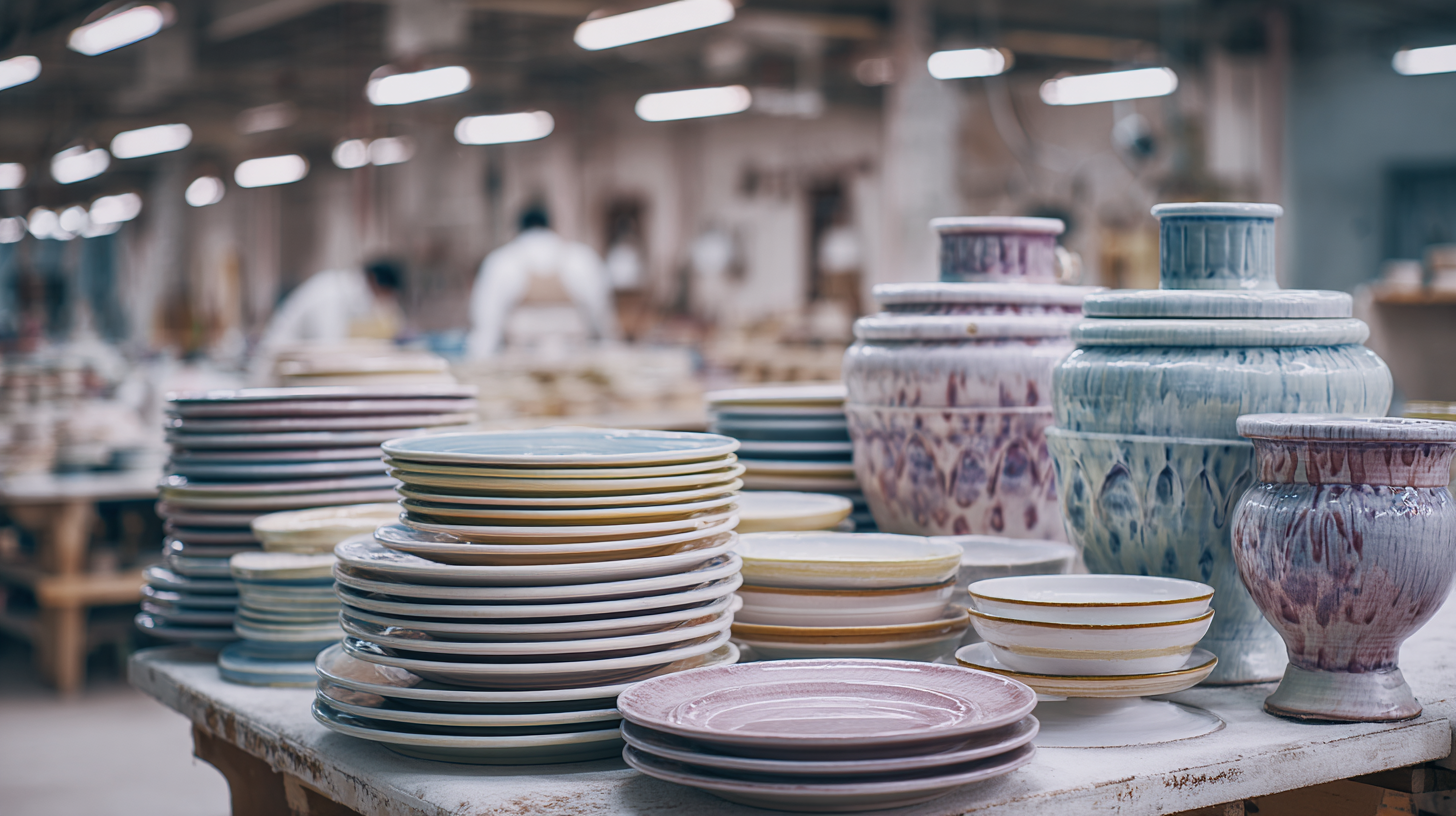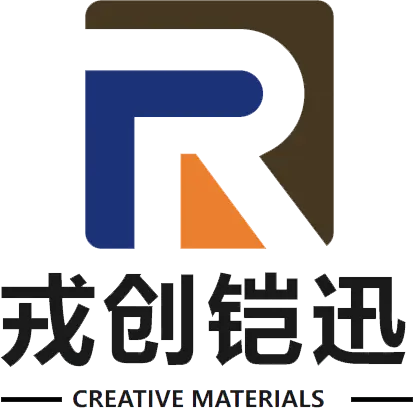In the rapidly evolving ceramics market, sourcing the best "Made Ceramics" from leading manufacturers has become a strategic imperative for businesses aiming to enhance their product offerings and meet consumer demand for quality. According to a recent market research report by Grand View Research, the global ceramics market size is projected to reach $300 billion by 2027, largely driven by a surge in demand for high-quality, aesthetically pleasing products. As buyers are increasingly discerning, the ability to identify and collaborate with top-tier manufacturers not only ensures premium quality but also provides a competitive edge in this burgeoning industry. Understanding the nuances of the ceramics supply chain and the specific criteria for evaluating manufacturers will be vital for success in this dynamic landscape.

When sourcing the best made ceramics, it’s essential to identify leading manufacturers that meet high standards of quality and craftsmanship. One key characteristic to look for is a manufacturer’s reputation in the market. Leading ceramics manufacturers often have a history of satisfied customers and positive reviews. Engaging with their existing clients can provide insights into the reliability and performance of their products.
Another important characteristic is the use of high-quality materials. Top manufacturers take pride in sourcing premium raw materials that not only enhance the aesthetics of their ceramics but also ensure durability and longevity. In addition to materials, innovative techniques in the production process can set a manufacturer apart. Those that invest in advanced technology and sustainable practices often produce ceramics that are both beautiful and environmentally friendly. Ultimately, identifying manufacturers that emphasize these qualities will lead to sourcing exceptional made ceramics that stand out in both functionality and design.
This chart illustrates the key characteristics to look for when identifying leading manufacturers of made ceramics, based on industry data.
In the realm of ceramic sourcing, ensuring stringent quality control is paramount. The recent emphasis on raw materials sourcing highlights the critical role it plays in maintaining high standards. Leading ceramics manufacturers are increasingly investing in advanced materials and skilled sourcing processes to guarantee the robustness and aesthetic appeal of their products.
According to industry reports, a significant percentage of defects in ceramic products can be traced back to inconsistencies in the quality of raw materials, which underscores the need for manufacturers to establish reliable supply chains.
Furthermore, implementing sophisticated digital surface inspection technologies can significantly enhance quality control measures. By deploying advanced inspection methods, manufacturers can identify potential defects in ceramic tiles and bathware at the earliest stages of production. This not only mitigates waste and reduces costs associated with rework but also reinforces the overall quality of the final products, as highlighted in studies evaluating industrial waste management and product durability.
As the market for ceramics continues to grow, those prioritizing quality control in sourcing will gain a competitive edge.
In the world of ceramics, sourcing high-quality products from leading manufacturers can often be a complex and time-consuming process. However, leveraging digital tools can significantly streamline your ceramic sourcing operations. By utilizing platforms that connect you with verified manufacturers, you can easily access a wide array of ceramic styles and products that meet your specific needs. These tools often come equipped with advanced filtering options, allowing you to narrow down your options based on materials, price ranges, and production capabilities.

Furthermore, digital solutions such as supply chain management software can enhance communication and collaboration with manufacturers. Real-time tracking and inventory management features enable you to monitor lead times and ensure timely deliveries, reducing the risk of delays in your production process. Additionally, integrated payment systems streamline transactions, making the entire sourcing experience more efficient and transparent. By embracing these digital resources, businesses can not only save time but also optimize their ceramic sourcing strategies, ultimately leading to better quality products and stronger supplier relationships.
Building strong relationships with ceramic manufacturers is vital for sourcing the best made ceramics. According to a report by IBISWorld, the U.S. ceramics manufacturing industry generated approximately $23 billion in revenue in 2022, highlighting the importance of collaboration with leading players in the marketplace. Establishing trust and open communication pathways can result in better pricing, exclusive access to new designs, and priority during high-demand periods. Regular engagement through visits, calls, and industry events helps in cementing these relationships and can offer a competitive edge.
Furthermore, understanding the operational capabilities and strengths of your manufacturers is key. Data from a McKinsey report shows that companies with strong supplier relationships can achieve up to 15% greater supply chain efficiency. By actively participating in joint planning and product development processes, businesses can align their goals and innovations with those of their ceramics partners. This synergy not only drives cost savings but also promotes the quality of the final products, ensuring that customers receive the best ceramics available on the market.
| Strategy | Description | Key Benefits | Implementation Tips |
|---|---|---|---|
| Developing Long-Term Partnerships | Cultivating ongoing relationships with manufacturers to ensure better communication and reliability. | Increased trust, consistent quality, and preferential pricing. | Regular check-ins, sharing feedback, and jointly developing products. |
| Quality Assurance Processes | Establishing strict quality control measures to ensure products meet standards. | Reduced defects, improved customer satisfaction, and minimized returns. | Conduct regular audits and provide clear quality guidelines. |
| Leveraging Technology | Utilizing software for inventory management and order tracking to streamline operations. | Increased efficiency, better forecasting, and quicker response times. | Invest in integrated supply chain management tools. |
| Effective Communication | Maintaining open lines of communication with manufacturers to address issues promptly. | Increased collaboration and quicker resolution of problems. | Schedule regular update meetings and utilize messaging platforms. |
| Market Research | Conducting thorough research to identify leading manufacturers and their capabilities. | Better sourcing decisions and understanding of market dynamics. | Attend trade shows and engage with industry reports. |
When evaluating samples of ceramics before making a purchase decision, it’s essential to focus on several key aspects that ensure you are sourcing the best quality products. First, consider the craftsmanship and finishing of the pieces. Pay attention to the smoothness of the surface, uniformity in color, and the precision of details. High-quality ceramics should exhibit a polished look without any noticeable defects or inconsistencies, which could indicate inferior manufacturing processes.

Next, evaluate the functionality and durability of the ceramics. Conduct a practical test to assess their strength, resistance to chipping, and suitability for intended use, whether it’s for everyday dining or decorative purposes. Additionally, inquire about the materials used and the firing process employed by the manufacturer, as these factors heavily influence the longevity and performance of the ceramics. By carefully considering these elements, you can make informed purchasing decisions that align with your brand's standards and customer expectations.
